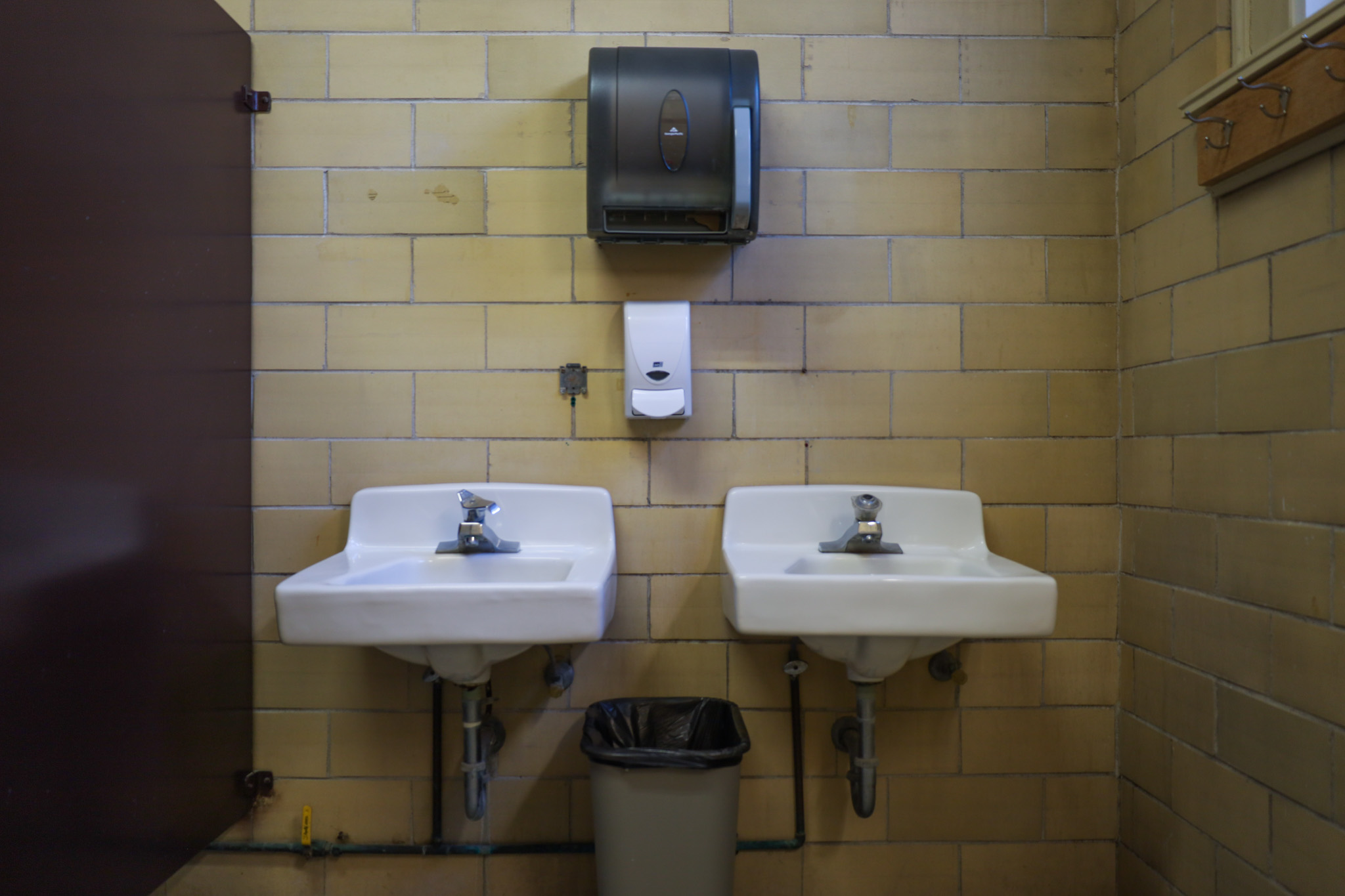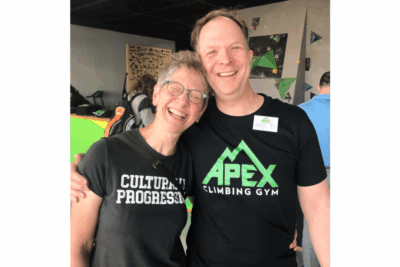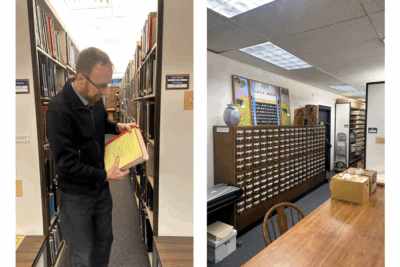The history within the walls of Goshen College’s buildings is plentiful. The red brick, the vines and limestone trim add to the charm that is GC. This vast history comes with years of repurposing buildings, and with constant repurposing, regular updates end up falling through the cracks.
The Visual Arts Building, tucked between the Leaf Raker parking lot and Administration Building, was built in 1940 and started its life as the library. The last renovation was made in 2003, which included some electrical upgrades, offices, new windows, reworking the ceramic lab and masonry restoration on the exterior according to Brian Mast, director of facilities.Walking through the building now, there is only one entrance that requires no stairs, which features a ramp. Per Americans with Disabilities Act regulations, the maximum ratio of inches rise to inches run is 1:12 for a new construction. After measurement by the Record, the ramp was determined to have a ratio of 1:3, which is steeper than the standard. However, because the building was built before 1990 and the hallway has not undergone renovations since the institution of the ADA, the ramp is not in violation of code.
Mafe Aguilar Vargas, a graphic design and marketing major, recently did a presentation for her Oral Communication class on the updates needed in the VA Building.
“Every building has gone through renovation, even the oldest [buildings],” Aguilar Vargas said, “I feel like the visual arts building has been left out — left behind.”
The VA Building’s bathrooms have also been a source of problems. Due to the cramped stalls, odors from drainage pipes and excessive heat.
The building is made up of three floors, with no additional ramps or elevators. Sara Method, chair of the art department, said, “From a standpoint of accessibility, yes, it is a zero accessibility space because even the doorway to get into the one room that you wouldn’t have to take a step to is not wide enough for a wheelchair to fit through.”
The building uses steam heating distributed through pipes and radiators which presents its own set of issues. It leaves the building excruciatingly hot during the winter and, since there is no air conditioning, hot in the summer.
Method said, “We’ve had to cancel classes before in August, because it was so hot in the building that no one could function.”
She said, “We had to relocate our art history class that used to be upstairs for two reasons. [One], we outgrew the space, but two, I knew we had a student who couldn’t get up there every time, so we moved to Wyse.”
Another building with a plethora of issues is Kulp Hall, which was originally built in 1906 as a women’s residence and dining hall and is currently used as co-ed housing. The last significant renovation made to the building was also in 2003, which, according to Mast, consisted of new roofing; complete restoration of the exterior masonry; a new building entry on the East side; all new plumbing and restrooms on all floors; and additional small group housing created on the first floor by removing less utilized spaces.
“The work included new water heaters and HVAC controls with new interior signage and a fire impression system. Five new kitchens, dining areas and lounges,” said Mast.
Living in Kulp is a distinct experience from other residence halls, in part because of its location on “the other side of the tracks,” but also due to how it’s built.
While heating and A/C is an issue in the VA Building, it’s the same for Kulp. In the first week of classes, residents were evacuated from Kulp to Miller Residence Hall in the middle of the night due to extreme heat.
In early September 2024, three emails were sent out to Kulp residents with updates titled “Additional Measures For Bats,” “Usage of Window A/C” and “If You Spot A Mouse.”
The emails included a guide on what residents should do in the case that a bat or mouse is seen. The first speaks on screecher devices being used to remove the bats; the second urged students to set up traps, place a work order to their RA and to keep rooms clean; the third addresses the reasoning for not allowing air conditioning units, being the building’s electrical systems cannot support them.
T Rodriguez, a junior nursing major living on Kulp 2, said about that night, “It got above 100° in my room [and] the thermostat was all the way up. … I was getting in the shower like every 30 minutes just [to] cool off.”
Amy Drew, a senior psychology major, lived in Kulp this past fall and said that there were also bats loose, in addition to “mice or rats at some point, which I had heard going throughout the vents.”
Jesus Serna, a junior IT major who lives in Kulp, stated that he had a spider infestation in his room. “That night when I was on my phone watching TikTok, [there were] spiders walking on the screen,” he said. “The next day, I went to the Menards and bought pesticides and covered my room.”
Facilities held a meeting with Kulp to discuss the problems and possible solutions. “We can’t solve problems unless we know about them,” said Mast, “we want to know right away so that we can really keep after it.”




